In October of 2018, the PM² Guide v3 was released by DiGIT, European Commission and published on the EU Bookshop with an open-source license. This release includes an Appendix with PM² Extensions which feature a new section D2 (page A-106 to 108) with a basic model for Programme Management named PM²-PGM. This article extends and elaborates this basic model, which when published will be called PgM² and will be fully aligned with the spirit and model of PM² and Agile PM² adding more insights and material to the family of “squared” Methodologies.
All of the “squared” methodology guidelines are published with a Creative Commons licence.
The PgM² Programme Management Methodology aims to help (primarily but not exclusively) Functional and Matrix Organisations establish a management framework for the effective management of their programmes, particularly when their projects are managed with the PM² Methodology.
A programme is a collection of projects aiming towards a common goal and which are managed in a coordinated way to obtain benefits and control that could not be obtained from managing them individually.
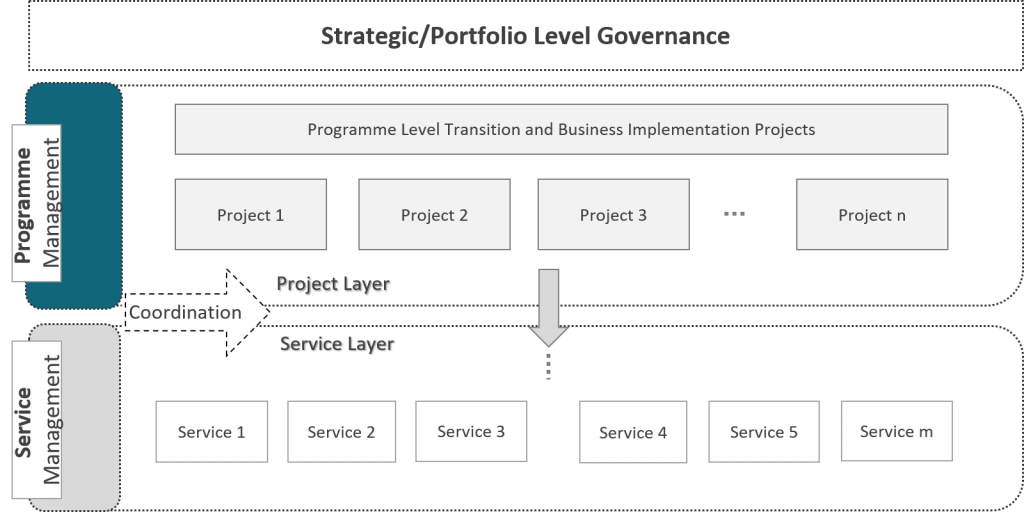
Programme management is concerned with managing these interrelated projects to better achieve the programme’s objectives and benefits. The programme management layer interacts with the project management layer in that it initiates and coordinates the projects within the programme. The programme itself is initiated by the Strategic/Portfolio management layer within the organisation.
The PgM² Programme Management, just like PM², comprises:
- a Lifecycle with 4 Phases
- a Governance Model
- a set of Management Processes
- a set Artefacts
The PgM² Programme Lifecycle

A programme has a defined start and end. During this period, all programme activities are performed, and its project components deliver all of their outputs. The PgM² programme lifecycle has four phases: the Initiating Phase, the Planning Phase, the Executing Phase and the Closing Phase. Throughout the whole life of the programme Monitor & Control activities are performed.
Note that the PgM² Programme Phases are distinct to the PM² Project Phases.
Programmes focus on the achievement of outcomes resulting from the outputs of its projects.
Each of the Programme Phases can also contain several Stages. Most often, multiple stages are defined in the Executing Phase where each Stage is linked to a major achievement in terms of programme outcomes, which enable the realisation of the intended benefits.
The programme management activities performed are grouped and described in each Phase. These activities are also complemented with a number of programme artefacts which are used to capture in more details the programme level processes (e.g. Change Management or Risk Management) and to document the outputs of these activities (e.g. programme plans or performance reports).
Programme Management plays a crucial role in the management of the “white space” between its projects.
The PgM² Programme Management Governance
Governance is the management framework within which programme management decisions are made. It defines all standard programme roles and their associated responsibilities while describing escalation and reporting lines.
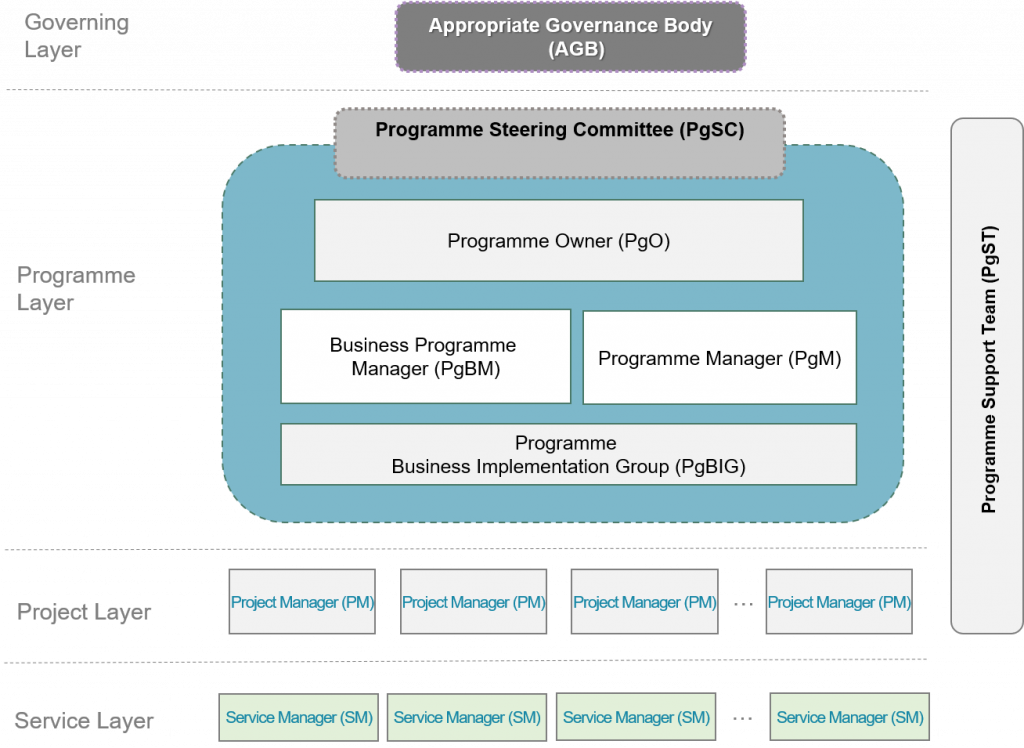
The Programme Layer connects the Governance Layer with the Project and Services Layer and is there to facilitate the coordination of the programme components, which are mainly projects but sometimes also ongoing services.
The Programme Owner (PgO) is accountable for the programme’s success, whereas the day-to-day management of the programme is delegated to the Programme Manager (PgM), whose focus is to achieve the programme outcomes.
The Programme Business Manager (PgBM) represents the Programme Owner (PgO) on a daily basis within the programme and collaborates closely with the Programme Manager (PgM). The focus of this role is to realise the programme benefits, enabled by the programme outcomes.
The Programme Steering Committee (PgSC) comprises the Programme Owner (PgO), Programme Business Manager (PgBM) and Programme Manager (PgM). Other expert roles can participate as needed. The Programme Steering Committee (PgSC) is responsible for realising the programme’s objectives and benefits.
A programme can also have a temporary Programme Support Team (PgST) to provide administrative assistance to the programme and its component projects.
The PgM² Responsibilities Assignment Matrix (RAM) below presents the assignment of the responsibilities for several Programme Management activities or artefacts to the various PgM² governance roles using the DARSCI Model (Decides, Accountable, Responsible, Supports, Consulted, Informed).
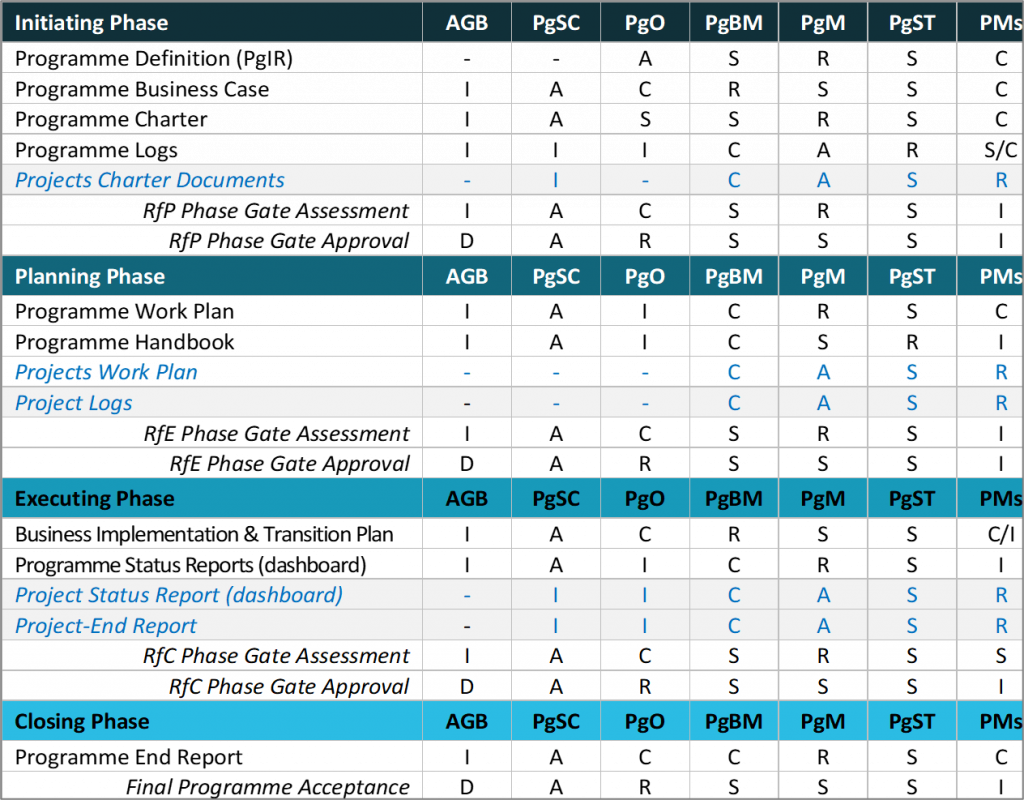
Note: The Role that has the (DARSCI:D) Decide responsibility is the decision making authority. This decision can be related to the approval (or rejection) of the results of a given management activity or artefact. Decisions for moving past a Phase Gate are typical areas of application of the Decide (DARSCI:D) Responsibility. When there is no explicit assignment of the (DARSCI:D), it is implied that the Role that is Accountable (DARSCI:A) has also the Decide (DARSCI:D) responsibility. There is always a single Role that has the Decide responsibility.
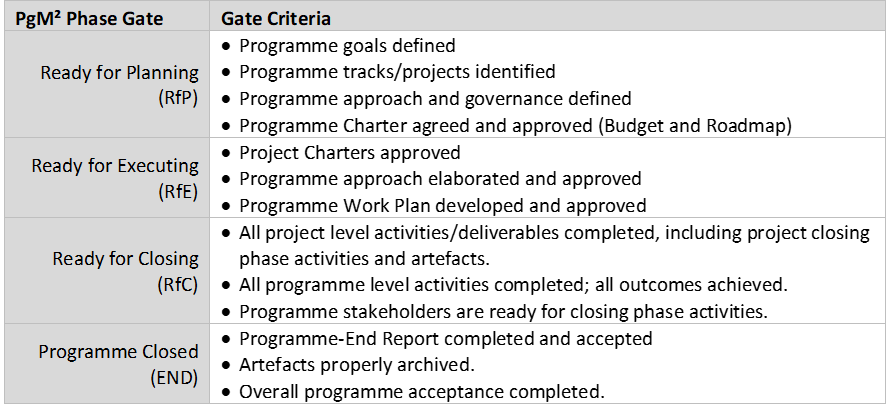
PgM² Artefacts
Documentation plays an important role in the management of a programme and should adhere to the quality standards of the organisation. The PgM² Methodology Artefacts:
- define the programme objectives and composition (i.e. Business Case and Charter)
- define the programme management approach (i.e. the Programme Handbook)
- document the Roadmap and Plan (i.e. Programme Work Plan)
- present the performance of the programme (i.e. Programme Status Reports)
- plan transition and benefits realisation (i.e. Transition and Business Implementation Plans)
- facilitate monitoring & controlling and stakeholder engagement (i.e. Programme Logs).
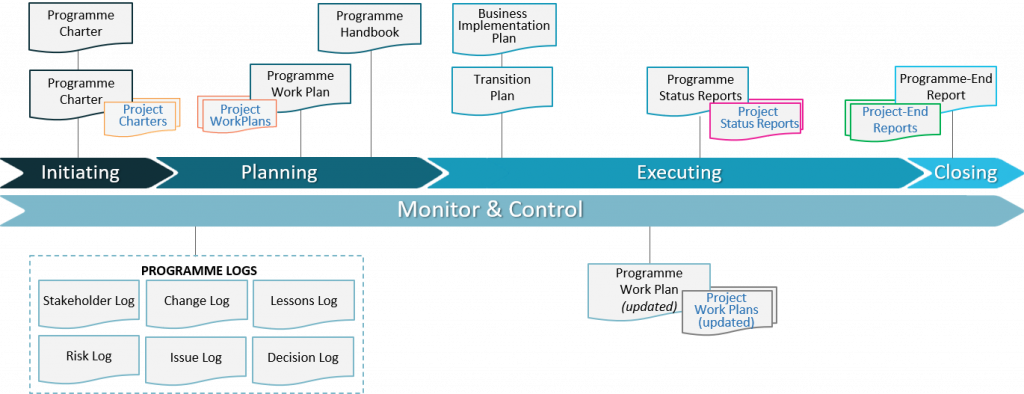
PgM² Summarised
The table below consolidates the key programme Activities, the Objectives and Artefacts associated with each of the PgM² Programme Phases (and for Monitor & Control):
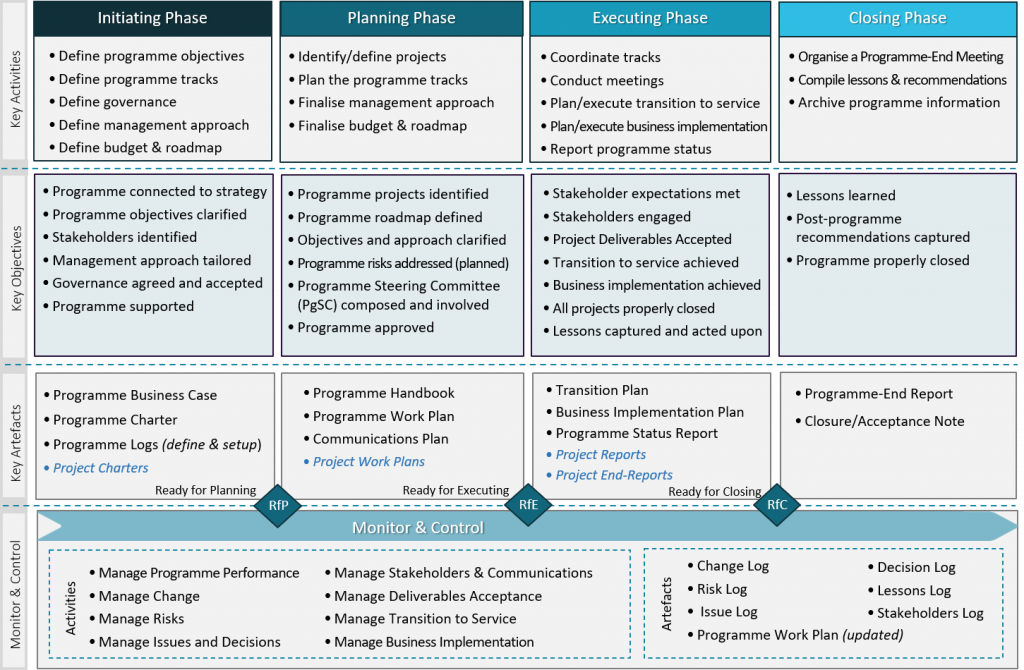
Acknowledgements
The following people are acknowledged as the main contributors of the Appendix on PM²-PGM Programme Management of the PM² Guide v3: Nicos Kourounakis, Bert Kips.
See Also:








